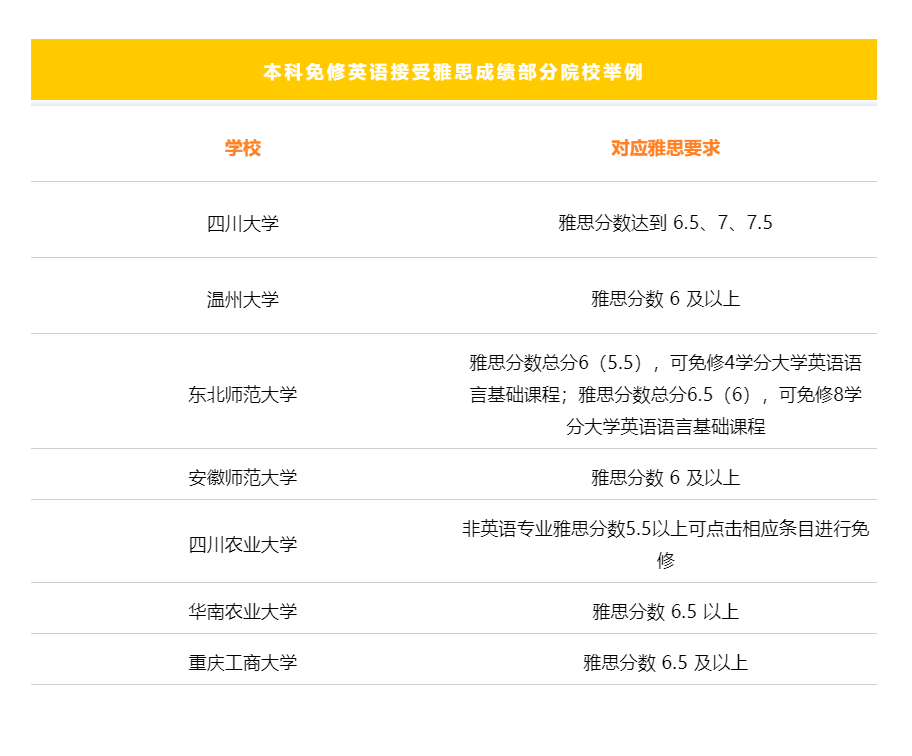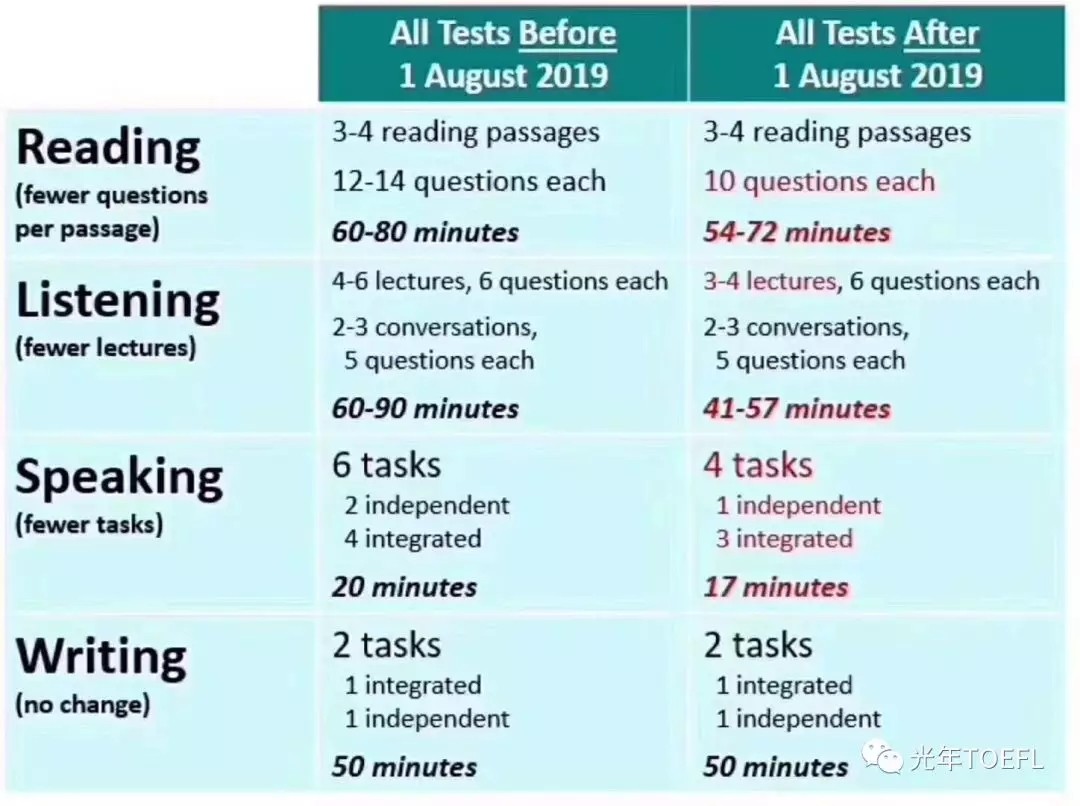一起来研究一下是非题吧,下面小编给大家带来了雅思阅读14类题型解题技巧之Ture/False/Not given,下面小编就和大家分享,来欣赏一下吧。
雅思阅读14类题型解题技巧--Ture/False/Not given(是非题)
Ture/False/Not given(是非题)
1. 题型要求
题目是若干个陈述句,要求根据原文所给的信息,判断每个陈述句是对(Ture)、错(False)、还是未提及(Not Given)。
这种题型的难度在于,在对和错之外还有第三种状态:未提及。很多同学难以区分“错”和“未提及”。
实际上,这种题型本身有一定的缺陷,即不严密。有些题目很难自圆其说,比如6道题中,可能会有1-2题英语老师也解释不清,在实际考试中,他们也可能将它们做错。但大多数题目还是有规律可循的,同学们应认真阅读下面讲的方法和规律,争取做对大多数的题目。
这种题型,A类考试每次考1-2组,共5-10题左右。G类考试一般考3组,20题左右,最多的一次超过30题。所以,G类考生更应重视此种题型。
2. 解题步骤
STEP 1:定位,找出题目在原文中的出处。
(1)找出题目中的关键词, 最好先定位到原文中的一个段落。
(2)从头到尾快速阅读该段落,根据题目中的其它关键词,在原文中找出与题目相关的一句或几句话。
(3)仔细阅读这一句话或几句话,根据第二大步中的原则和规律,确定正确答案。
(4)要注意顺序性,即题目的顺序和原文的顺序基本一致。第一题的答案应在文章的前部,第二题的答案应在第一题的答案之后。这个规律也有助于大家确定答案的位置。
STEP 2:判断,根据下列原则和规律,确定正确答案。
1. True
第一种情况:题目是原文的同义表达。通常用同义词或同义结构。
例 1:原文:Few are more than five years old.
译文:很少有超过五年的。
题目:Most are less than five years old.
译文:大多数都小于五年。
解释:题目与原文是同义结构,所以答案应为True。
第二种情况:题目是根据原文中的几句话做出推断或归纳。不推断不行,但有时有些同学会走入另一个极端,即自行推理或过度推理。
例 1:原文:Compare our admission inclusive fare and see how much you save. Cheapest is not the best and value for
money is guaranteed. If you compare our bargain Daybreak fares, beware--------most of our competitors
do not offer an all inclusive fare.
译文:比较我们包含的费用会看到你省了很多钱。最便宜的不是最好的。如果你比较我们的价格,会发现绝大多数的竞争对手不提供一揽子费用。
题目:Daybreak fares are more expensive than most of their competitors.
译文:Daybreak的费用比绝大多数的竞争对手都昂贵。
解释:虽然文章没有直接提到的费用比绝大多数的竞争对手都昂贵。但从原文几句话中可以推断出Daybreak和绝大多数的竞争对手相比,收费更高,但服务的项目要更全。与题目的意思一致,所以答案应为True。
2. False
第一种情况:题目与原文直接相反。通常用反义词、not加同义词及反义结构。
例 1:原文:A species becomes extinct when the last individual dies.
译文:最后一个个体死亡时,一个物种就灭亡了。
题目:A species is said to be extinct when only one individual exists.
译文:当只有一个个体存活时,一个物种就被说是灭亡了。
解释:可以看出题目与原文是反义结构。原文说一个物种死光光,才叫灭绝,而题目说还有一个个体存活,就叫灭绝,题目与原文直接相反,以答案应为False。
第二种情况:原文是多个条件并列,题目是其中一个条件(出现must或only);反之,原文是两个或多个情形(通常是两种情形)都可以,常有both…and、and、or及also等词,题目是“必须”或“只有”其中一个情况,常有must及only等词。
例 1:原文:Booking in advance is strongly recommended as all Daybreak tours are subject to demand. Subject to
availability, stand by tickets can be purchased from the driver.
译文:提前预定是强烈建议的,因为所有的Daybreak旅行都是由需求决定的。如果还有票的话,可直接向司机购买。
题目:Tickets must be bought in advance from an authorized Daybreak agent.
译文:票必须提前从一个认证的代理处购买。
解释:原文是提前预定、直接向司机购买都可以,是多个条件的并列。题目是必须提前预定,是必须其中一个情况。所以答案应为False。
第三种情况:原文为人们对与于某样事物的理论或感觉,题目则强调是客观事实或已被证明。原文强调是一种“理论”或“感觉”,常有feel等词。题目强调是一种“事实”,常有fact及prove等词。
例 1:原文:But generally winter sports were felt to be too specialized.
译文:但一般来说,冬季项目被感觉是很专门化的。
题目:The Antwerp Games proved that winter sports were too specialized.
译文:Antwerp运动会证明冬季项目是很专门化的。
解释:原文中有feel,强调是“感觉”。题目中有prove,强调是“事实”。所以答案应为False。
第四种情况:原文和题目中使用了表示不同范围、频率、可能性的词。原文中常用many(很多)、sometimes(有时)及unlikely(不太可能)等词。题目中常用all(全部)、usually(通常)、always(总是)、及impossible(完全不可能)等词。
例 1:原文:Without a qualification from a reputable school or university, it is unlikely to find a good job.
译文:不是毕业于著名学校的人不太可能找到一个好的工作。
题目:It is impossible to get a good job without a qualification from a respected institution.
译文:不是毕业于著名学校的人找到一个好的工作是完全不可能的。
解释:原文中有unlikely,强调是“不太可能”。题目中有impossible,强调是“完全不可能”。所以答案应为False。
第五种情况:原文中包含条件状语,题目中去掉条件成份。原文中包含条件状语,如if、unless或if not也可能是用介词短语表示条件状语如in,with,but for或exept for。题目中去掉了这些表示条件状语的成份。这时,答案应为False。
例文:The Internet has often been criticized by the media as a hazardous tool in the hands of young computer users.
译文:Internet通常被媒体指责为是年轻的计算机用户手中的危险工具。
题目:The media has often criticized the Internet because it is dangerous.
译文:媒体经常指责Internet ,因为它是危险的。
解释:原文中有表示条件状语的介词短语in the hands of young computer users, 题目将其去掉了。所以答案应为 False。
3.Not Given
第一种情况:题目中的某些内容在原文中没有提及。题目中的某些内容在原文中找不到依据。
第二种情况:题目中涉及的范围小于原文涉及的范围,也就是更具体。原文涉及一个较大范围的范筹,而题目是一个具体概念。也就是说,题目中涉及的范围比原文要小。
例1:原文:Tourists in Cyprus come mainly from Europe.
译文:到塞浦路斯旅游的游客主要来自欧洲。
题目:Tourists in Cyprus come mainly from the UK.
译文:到塞浦路斯旅游的游客主要来英国。
解释:题目中涉及的概念“UK”比原文中涉及的概念“Europe”要小。原文只说到塞浦路斯旅游的游客主要来自欧洲,有可能
主要来自英国,也可能主要来自欧洲的其他国家,文章中没给出进一步的信息。所以答案应为Not Given。
第三种情况:原文是某人的目标、目的、想法、愿望、保证、发誓等,题目是事实。原文中常用aim(目的)、purpose(目的)、promise(保证)、swear(发誓)及vow(发誓)等词。题目中用实意动词。
例1:原文:His aim was to bring together, once every four years, athletes from all countries on the friendly fields
of amateur sport.
译文:他的目的是把各国的运动员每四年一次聚集到友好的业余运动的赛场上。
题目:Only amateur athletes are allowed to compete in the modern Olympics.
译文:只有业余运动员被允许在现代奥运会中竞争。
解释:原文中用aim表示“目的”,题目中用实意动词表示“事实”。把各国的运动员聚集到友好的业余运动的赛场上,这只是
创建者的目的,实际情况怎样,文章中没说,所以答案应为Not Given。
第四种情况:题目中有比较级,原文中没有比较。
例1:原文:In Sydney, a vast array of ethnic and local restaurants can be found to suit all palates and pockets.
译文:在悉尼,有各种各样的餐馆。
题目:There is now a greater variety of restaurants to choose from in Sydney than in the past.
译文:现在有更多种类的餐馆可供选择。
解释:原文中提到了悉尼有各种各样的餐馆,但并没有与过去相比,所以答案应为Not Given。
NOTICE
1. 一定要依据原文,不能凭皆自己的知识。
原文是判断的唯一根据。所以,无论你对文章内容或背景多么熟悉,或者你的知识多么丰富,都不能凭借自己的知识来确定答案。即使题目中说“地球是正方形的”。如果文章中没说,你只能答Not Given,不能答False。
例1:原文:His aim was to bring together, once every four years, athletes from all countries on the friendly fields
of amateur sport.
译文:他的目的是把各国的运动员每四年一次聚集到友好的业余运动的赛场上。
题目:Only amateur athletes are allowed to compete in the modern Olympics.
译文:只有业余运动员被允许在现代奥运会中竞争。
解释:有的同学会认为,现在奥运会中有很多职业运动员参赛,所以答False。但是很可惜,这是你自己的知识,文章中没说,所以答案应为Not Given。
2. 可以依据原文做适当的推断,但不能做无根据的自行推断或过度推断。
有些题目需要根据原文做适当的推断,才能确定正确答案,但必须是根据原文来做推断,不能做毫无根据的推理。而且一般来讲,即使有推理,也只推一步,不要推得很深。有些阅读水平好的同学,如果不掌握前面的规律和方法,做这种题型反而错得更多,主要原因就是想得太多,或推理得太多和太深。
3. 要注意题目要求答什么。
同是是非题,有时题目要求考生答Ture/False/Not Given,有时要求答T/F/NG,有时又要求考生答Yes/No/Not Given,必须按照要求去做,否则,本来判断正确,因为不符合要求而失分,很可惜。避免答错的一个方法是:在平常练习中就按照题目的要求去答,而不是随心所欲。
4. 题目中若出现must、only、all及always,答案一般不会是Ture。
题目中出现这些瓷很常见,95%的答案都不是Ture。笔者只遇到过一次题目中出现了must而答案为Ture的情况。题目中出现上述这些词,答案False是还是Not Given,就不一定,需要根据上面讲的规律再做判断,一般答案是False的比例更大一些。不看原文,下面几个题目的答案都是False。
i. Europeans learned all of what they knew of edible, wild plants from Aborigines.
ii. Before the dry plate process short exposures could only be achieved with cameras held in the hand.
5. 答案选择有一定的规律。
笔者通过实践得出如下的规律:
A. 题目数目在5个或5个以上时,三种答案都要出现。题目数目在5个以下时,则不一定。
B. 可以连续三题答案都一样,如都是Ture,但还没有连续四题答案都一样。连续三题都一样的情况也不多见,笔者只遇到过两次,一次都是Ture,一次都是Not Given。
6.要相信自己的第一感觉,不要轻易改答案。在考试中,除非有特别强的理由,否则不要轻易改答案,人的第一感觉往往是正确的。很多同学都将正确的答案改错了。
7. 要注意上述规律和方法的运用,不要钻牛角尖。
这种题型本身有一定的缺陷,即不严密。所以上述规律和方法若能理解就最好,如不能理解,就记住它们,考试时,照着做就可以了,这些规律都经过实践的检验。
雅思阅读机经真题解析-Man or Machine
Man or Machine
ADuring July 2003, the Museum of Science in Cambridge, Massachusetts exhibited what Honda calls 'the world's most advanced humanoid robot', AS1MO (the Advanced Step in Innovative Mobility). Honda's brainchild is on tour in North America and delighting audiences wherever it goes. After 17 years in the making, ASIMO stands at four feet tall, weighs around 115 pounds and looks like a child in an astronaut's suit. Though it is difficult to see ASIMO's face at a distance, on closer inspection it has a smile and two large eyes' that conceal cameras. The robot cannot work autonomously - its actions are 'remote controlled' by scientists through the computer in its backpack. Yet watching ASMIO perform at a show in Massachusetts it seemed uncannily human. The audience cheered as ASIMO walked forwards and backwards, side to side and up and downstairs. After the show, a number of people told me that they would like robots to play more of a role in daily life - one even said that the robot would be like 'another person'.
BWhile the Japanese have made huge strides in solving some of the engineering problems of human kinetics (n.动力学) and bipedal (adj. 两足动物的)movements, for the past 10 years scientists at MIT's former Artificial Intelligence (Al) lab (recently renamed the Computer Science and Artificial Intelligence Laboratory, CSAIL) have been making robots that can behave like humans and interact with humans. One of MITs robots, Kismet, is an anthropomorphic (adj.拟人的) head and has two eyes (complete with eyelids), ears, a mouth, and eyebrows. It has several facial expressions, including happy, sad, frightened and disgusted. Human interlocutors are able to read some of the robot's facial expressions, and often change their behavior towards the machine as a result - for example, playing with it when it appears ‘sad’. Kismet is now in MIT’s museum, but the ideas developed here continue to be explored in new robots.
CCog (short for Cognition) is another pioneering project from MIT’s former AI lab. Cog has a head, eyes, two arms, hands and a torso (n.躯干) - and its proportions were originally measured from the body of a researcher in the lab. The work on Cog has been used to test theories of embodiment and developmental robotics, particularly getting a robot to develop intelligence by responding to its environment via sensors, and to learn through these types of interactions.
DMIT is getting furthest down the road to creating human-like and interactive robots. Some scientists argue that ASIMO is a great engineering feat but not an intelligent machine - because it is unable to interact autonomously with unpredictabilities in its environment in meaningful ways, and learn from experience. Robots like Cog and Kismet and new robots at MIT’s CSAIL and media lab, however, are beginning to do this.
EThese are exciting developments. Creating a machine that can walk, make gestures and learn from its environment is an amazing achievement. And watch this space: these achievements are likely rapidly to be improved upon. Humanoid robots could have a plethora of uses in society, helping to free people from everyday tasks. In japan, for example, there is an aim to create robots that can do the tasks similar to an average human, and also act in more sophisticated situations as firefighters, astronauts or medical assistants to the elderly in the workplace and in homes – partly in order to counterbalance the effects of an ageing population.
FSuch robots say much about the way in which we view humanity, and they bring out the best and worst of us. On one hand, these developments express human creativity - our ability to invent, experiment, and to extend our control over the world. On the other hand, the aim to create a robot like a human being is spurred on by dehumanized ideas - by the sense that human companionship can be substituted by machines; that humans lose their humanity when they interact with technology; or that we are little more than surface and ritual behaviors, that can be simulated with metal and electrical circuits.
Questions 1-6
Reading passage 1 has six paragraphs, A-F.
Which paragraph contains the following information?
Write the correct letter, A-F, in boxes 1-6 on your answer sheet.
NB you may use any letter more than once
1 different ways of using robots
2 a robot whose body has the same proportion as that of an adult
3 the fact that human can be copied and replaced by robots
4 a comparison between ASIMO from Honda and other robots
5 the pros and cons of creating robots
6 a robot that has eyebrows
Questions 7-13
Complete the following summary of the paragraphs of Reading Passage 1, using NO MORE THAN TWO WORDS from the Reading Passage for each answer.
Write your answers in boxes 7-13 on your answer sheet.
In 2003, Massachusetts displayed a robot named ASIMO which was invented by Honda, after a period of 7 in the making. The operating information is stored in the computer in its 8 so that scientists can control ASIMO's movement. While Japan is making great progress, MIT is developing robots that are human-like and can 9 humans. What is special about Kismet is that it has different 10 which can be read by human interlocutors. 11 is another robot from MIT, whose body's proportion is the same as an adult. By responding to the surroundings through 12 ,it could develop its 13 .
文章题目:Man or Machine
篇章结构
体裁议论文
题目是人还是机器
结构A. ASMID研制成功并向公众展示的社会影响
B. CSAIL一直致力于研制拟人机器人
C. Cog是有着和人来一样的比例的机器人
D. 在创造类人互动机器人方面, MIT走在前端
E. 类人机器人的发展空间
F. 创造类人机器人的利与弊
试题分析
Question 1-13
题目类型:Information in relevant paragraph
定位词文中对应点题目解析
1Different ways E段第4句E段开头就引出创造机器人的成就, 随后并提出这些成就有一定的发展空间, 直到第四句说明这些类人机器人have a plethora of uses,用途多样. 因此答案为E
2The same proportion
...adultC段第2句C段第2句提到cog has a head...and its proportions were originally measured from the body of a researcher in the lab. 表明该机器人是按照成年人人体比例创造的, 因此答案为C
3Copied replacedF段第3句F段第三句the aim to create...by the sense human...can be substituted..., that can be simulated 都表示人类可被机器等取代.因此答案为F
4Comparison
ASIMO... Pther robotsD段第2,3句D段第2句指出ASIMO is...but not an intelligent machine,because it is unable to...learn from experience.第3句又表明robots like...however, are beginning to do this. 体现出其他机器人能做到ASIMO所不能做到的自发学习. 因此答案为D
5Pros and consF段第1句F段开头指出这些机器人证明了我们看待人性的方式, bring out the best and worst of us.这半句话体现出创造机器人的利与弊. 因此答案为F
6eyebrowsB段倒数第4句B段倒数第四句提到one of MIT’S robots is...and has two eyes...and eyebrows. 因此答案B
Question7-13 Summary from Reading Passage
summary参考解题思路: 先跳开空格把该段通读一遍, 了解大意, 发现总体是按照文章段落顺序概括的. (如有所遗忘, 再看原文各段段首句, 大概知道各句在文章的相应段落)
解析: 第1句和第2句对应文章A段, 根据after a period of 7___in the making定位该段第3句, 答案为17 years. 然后根据文章倒数第四句its action are...controlled by scientists through...in its backpack.可以判断8答案为backpack. 该题第3, 4句对应文章B段, MIT is inventing robots...with the ability to 8___humans定位该段第2句behave like humans and interact with humans.可以判断9答案为interact with. 根据Kismet ...has various...by human interlocutors定位原文倒数第2句human interlocutors are able to read some of the robots’ facial expressions得出10答案为facial expressions. 第5,6句对应原文C段, robot from MIT,proportion定位该段第1, 2句得出11答案为Cog/cognition. 最后根据该段最后一句getting a robot to develop intelligence via sensors判断12答案为sensors, 13 答案为intelligence.
参考翻译:
是人还是机器
A在2003年7月,曼彻斯特的剑桥博物馆陈列了Honda称之为“世界最先进的人性机器人”:ASIMO (即“创新移动的进步之举)。Honda的智力产物正在北美巡回展示,所过之处,总能令现众开心不已。17年的辛苦制作,ASIMO高4英尺,重115磅,以小孩的形态穿着宇航服。在远距离看不清ASIMO,近距离下ASIMO面带微笑,两个大眼睛包含着摄像头。它不能自己行走,得由科学家通过机器人背包上的电脑远程控制。观察ASIMO在曼彻斯特的表演,很令人惊讶,它具有人性的特征。ASIMO走来走去的时候,上下楼梯的时候,现众总是爆发出喝彩声。展示过后,许多人跟我说,他们喜欢机器人在日常生活中起更大的作用——有人甚至说:机器人就像是人一样。
B日本人大踏步地解决人类动力学和两足动物移动的工程问題。与此同时,近十年来,MIT的前人工智能实验室AI(现在重新命名为电脑科学人工智能实验室CSAIL)—直致力于研制能够类似于人类,同时能与人互动的机器人。Kismet是MIT的拟人机器人,有一个像人一样的头,有两只眼睛(也有眼睑),耳朵,嘴巴,眉毛。它可以做好些面部表情,比如开心,悲伤,惊恐,讨厌。与之对话,我们可以获得机器人的些许面部表情,从而改换面对机器人的态度。比如说:当机器人表现出“悲伤”的时候,就与机器人玩耍.Kismet如今位于MIT的博物馆,但这里发展的理念将继续在新的机器人身上被探索。
CCOG(认知cognition的缩写)是另外一个前MIT智能实验室的先驱项目。有头,两条胳膊,手臂和躯干,其比例最早是由实验室研究员的身体测量而来的。COG被用来检测机器人学的体现和发展,特别是通过传感器去发展智力反应周边环境方面,以及通过互动类型学习方面。
D在创造类人互动机器人方面,MIT无疑走得最远。有些科学家争辩道:ASIMO是一个伟大的工程,但并不算是智力机器。因为它不能自动以有意义的方式与未知情况互动,也不能从经验中学习。COG和Kismet,以及在MIT的CSAIL媒体实验室的新机器人却是可以自发学习的。
E这些都是令人激动的进展。创造一个机器,能走,能做手势,能从环境中学习,这是了不起的成就。看看这种发展空间吧:这些现有成就都还能够很快地加以改进。类人机器人能在社会上具有广泛的用途:把人们从日常琐事中解放出来。举个例子:在日本,人们想创造出精密的机器人,能够与正常人做一样的工作,比如说消防队员,宇航员,工作地点和家中医护助手,以便于部分地抵消老龄化的影响。
F这些机器人证明了我们看待人性的方式,它们也表现出了我们人类中最好的和最差的方面。一方面,这些发展表达了人类创新性,也就是我们有能力去发明,实验,和延长对世界的控制。另一方面,创造类人机器人的目标被去个性化的理念所刺激。人类友情将让路于机器。当人类与技术互动时,人类失去了人性。或者说,我们人类不过是表面和楼式行为而己,能够被钢铁和电路所取代。
参考答案:
Version 17203 主题 仿生小机器人
1E 2C 3F
4D 5F 6B
7 17 years 8backpack 9interact with
10 facial expressions 11Cog/Cognition 12sensors
13 intelligence
雅思阅读14类题型解题技巧之是非题
given,下面小编就和大家分享,来欣赏一下吧。雅思阅读14类题型解题技巧--Ture/False/Not given(是非题)Ture。下面小编给大家分享雅思阅读14类题型解题技巧之是非题,希望能帮助到大家。 雅思阅读14类题型解题技巧之是非题文档下载网址链接:
下一篇:返回列表






